(Editor’s note: The following article is adapted from a D’var Torah delivered at Beth Jacob Congregation in Mendota Heights.)
By ARIE ZMORA
Hei Beiyar (the 5th day of Iyar) has special personal meaning for me. I was welcomed to the covenant of Avraham Avinu, in other words my Brit Mila, on Hei Beiyar 1950 in Haifa. My son Michael was welcomed to Avraham Avinu’s Covenant on Hei Beiyar 1982 in Tel Aviv.
Two years ago I spoke from this bima on the historical events in the weeks that led to the establishment of the State of Israel on the fifth day of Iyar, 1948.
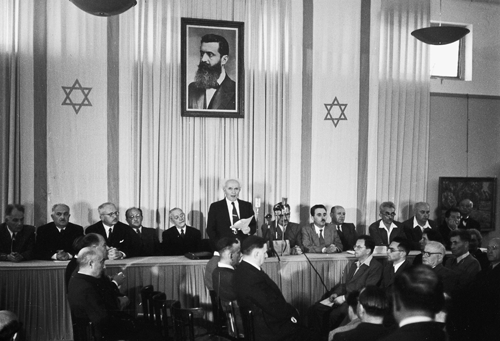
Sadly, the story of the State of Israel revolves to a large extent around wars and conflict. For the larger part of the past 70 years the Arab world had seen the State of Israel as an illegal entity, a colonial outpost that needs to be uprooted and destroyed. Unfortunately, to the present day, very few of Israel’s neighbors would acknowledge Jews as indigenous people who returned to their homeland after 2,000 years of living in exile.
I will share some personal stories of myself and my family, and how they have intertwined with the story of Israel over the past 70 years. By recounting my family’s life stories I hope to give you a more intimate view, and perhaps a better understanding of the struggles, tragedies, hopes and triumphs that have affected my family over these years. My personal account reflects in many ways lives of many Israeli families who shared similar life circumstances, fears, expectations, frustrations, and happy moments over the past 70 years.
My story starts when Dora Tahler, a Holocaust survivor, departed in early April 1948 from the Wetzler DP camp near Frankfurt-on-Main with hundreds of fellow Jewish refugees. She took a train to Paris and from there to Marseilles and embarked on April 20 on the Kedma, an old passenger ship that had been the first purchase of the newly established ZIM fleet. The ship reached Haifa on the last day of Pesach, April 29.
By that time Haifa was under full control of the Haganah forces — the Yishuv (the term coined for pre-state Israel) para- military forces, which after May 15 became the Israel Defense Forces. Most of the Arabs fled by boats to Lebanon, in spite of pleas from the Haganah commanders not to do so in view of the good neighborly relations between Jews and Arab in Mandatory Haifa.
Corporal Moshe Zmora, Dora’s fiancé, hugged Dora as she descended from the ship. They were married Oct. 26, 1948, when Corporal Zmora got a pass to leave his military duty fighting in the Galilee. Dora Tahler-Zmora reminisced on these days: “There was so much optimism and energy we were all young people. It was like I had wings!”
Indeed, coming to Israel in Pesach was a special transformative moment for my mother as she relived the biblical story of Exodus, when she moved from slavery in Nazi Europe to freedom in the independent State of Israel.
Back to April 29, 1948: Dora like many other refugees moved into an abandoned house vacated by the fleeing Arab owners. Dora found a bedroom in an apartment shared by two other families — Jewish refugees from Romania and from Lebanon. The three families shared one bathroom and a shower. I was born there. We lived in that one-bedroom, 300-square foot “apartment” as a family of four for 12 years. We were lucky. For over a decade, other refugees from European and Arab countries, such as Romania, Poland, Yemen, Iraq and the Magreb, lived in tents in a shantytown on the outskirts of Haifa.
My first personal encounter with the Arab-Israeli conflict took place when I turned six, during the Sinai War of October 1956. My father was called to active duty. His infantry unit was soon to be deployed to the Sinai. That was the last war Moshe Zmora took part in. He served in World War II as a soldier in the Polish Legion under American command in the Horn of Africa, and later as a soldier in the Israeli War of Independence for almost two years. Multiple military deployments were a rather typical situation.
My father-in-law, served in the Jewish Brigade of the British Army during WWII that fought and helped liberate Italy, and later in the Israeli War of Independence in the Sharon region. On and off, men of the Yishuv were engaged in combat for over a decade, from 1940-1949.
On the night of Oct. 31, 1956, we woke up in the middle of the night to a huge tremor. The entire building shook. My mother picked up me and my two-year-old brother and we ran down the stairs to the first floor, where we cowered under the staircase with all the neighbors. My mother recognized smell of sulfur from the explosive shells. One shell hit our terrace. Still now, if you visit the house on Google Earth, you can see traces of the shell where it hit the terrace.
We later learnt that an Egyptian frigate, a warship, Ibrahim El Hawa’al, on its way from Syria to Egypt was ordered to attack Haifa and the installations of the IDF navy in Haifa Bay. After a night long battle, the Egyptians surrendered. The residents of our house were among the first to visit the ship as it was displayed as a trophy of war. That was an amazing sight to see: a relic of the enemy that attempted to kill us, my brother, my mother, myself and our neighbors.
My second encounter with the direct consequences of the conflict happened during the Six-Day War of June 1967. I was a junior in high school at Ironi Gimmel in Newe Sha’annan, and as all the men were mobilized during the month of May, high school students fulfilled key positions in service and industry. I worked as a mailman delivering mostly postcards from soldiers to their families. As the war approached I worked in taping windows and putting sandbags around the ER center of Hacarmel hospital. Other high schoolers were digging mass graves since there was the anticipation of mass casualties.
The war proved us all wrong with a quick and unbelievable victory with a relatively low number of dead soldiers. But one casualty hit very close to home. Among the dead was our math teacher, Yuval Levi. In the memorial ceremony for Levi, our chemistry teacher, Bracha Orgad, gave a heartwarming eulogy, ending with a request of her teacher-colleagues: “Don’t be too harsh in grading your students. They will be on the battlefield in the next war and no one really knows which one of them will die.”
Decades later at our 40th class reunion, I hugged the 90-year-old teacher, and we shed tears as we recalled her words. We remembered two of the classmates who died in the Yom Kippur War: Aharon Margel and Eli Furmann.
Eli Furmann was my classmate since seventh grade. We lived on the same street, Hankin Road. At the eve of Yom Kippur in 1973, we took a cab from the Hebrew University in Jerusalem to Haifa. The following day during the morning prayers, the sirens blared. To the shock of all, a jeep came to the synagogue; the driver jumped out, rushed to the prayer hall and grabbed Eli and me. Both of us belonged to armored brigades, so we were called first to our military units. We hugged each other as we departed.
I never saw Eli again. He was killed on the last day of the war in the Sinai in a tank battle that took place near a place dubbed the Chinese Farm, close to the Suez Canal. In a postcard that arrived posthumously to his parents, Ely said that he sensed that he would not survive the war. Eli’s father was a Holocaust survivor who had lost his family, wife, and children in the Shoah.
In that war over 2,500 soldiers died. In addition to Eli, I frequently think of Moshe Alus, a shy and very good friend who studied economics at the Hebrew University. In 1973, Moshe was discharged from active duty, but he was not assigned a combat role and served in the reserve, as a miluimnik. As the war started Moshe volunteered with a platoon of tanks hastily mobilized to block the invading third Egyptian Army. Moshe, a tank driver, was killed in the first week of the war.
When I met Nurith, my wife, in the fall of 1974, I better understood the long-term impact of a loss of a son or a brother on bereaved families. Yoav, Nurith’s brother, was a soldier in the Golani Infantry Brigade and fought in the Six-Day War. He was killed on duty a few months after the end of the war by a land mine planted by PLO terrorists, while driving a jeep in the Dead Sea Valley.
In the aftermath of his son’s death, Nurith’s father, Yona Igali, an iron importer, decided to establish partnerships with Arab-Israeli and Palestinian businessmen. He did so in an effort to rekindle hope that economic partnerships would soften the bitterness of the conflict and lead to the normalization of relations between Jews and Arabs in the region. These partnerships lasted until my father-in-law passed away in 1983.
I share these stories of sacrifice, bravery, and loss of ordinary people and ordinary families in Israel, because the celebration of Independence Day comes at the heel of Yom Hazikaron, the Memorial Day commemorating the fallen IDF soldiers who fought and sacrificed their lives so we can lead a normal life. My mother, who saw the evil of humanity in close quarters in the Shoah, used to reflect on those days when festivities of Independence Day followed the somber moments of Memorial Day. She said, “In our country, Israel, we need to be strong. We need to get used to the realities of war and sometimes-peaceful times, but not a real peace.”
Regarding the proximity of Yom Hazikaron to Yom Ha’Atzmaut, my mother dryly quipped, “We are going to cry and shed tears with one eye and smile and laugh with the other eye.”
Although over time war became a part of Israelis lives, the people have never been morose or assumed a victim mentality. A recent comparative poll, from 2018, measuring happiness among the world’s nations found that Israelis ranked 11th in the world when it comes to feeling happy about their lives; in comparison, the U.S. ranked 17th.
Israel has flourished over these years with a robust economy, entrepreneurial spirit and as pioneers of innovation in the high-tech industries — which gave Israel the flattering title of Start-Up Nation. Moreover, in spite of tremendous challenges, Israel is still the only democracy in the Middle East where the rule of law prevails.
Sabra was a term coined to describe a Jew born in the land of Israel since the establishment of the state in 1948. Sabras were the first generation after 2000 years to experience a sense of being a majority in an independent state on their own land. It conveys a confidence of rootedness, but also entails responsibility to safeguard the civil and political rights of the Arab minority in the country.
Israel will always serve unconditionally as a refuge and shelter for persecuted Jews. Again, a personal story serves as a guide for understanding the enormity of the trauma Jews experienced because they had nowhere to flee before the Nazis exterminated them. In early May 1967, just before the eruption of the crisis that led to the Six-Day War, an elderly man with a large suitcase came knocking on our door at Hankin Road. It was my mother’s 80-year-old uncle, Jacob Shapiro, the brother of Bracha, my grandmother, who perished in Auschwitz in 1943. Jacob Shapiro came to the U.S. in 1920, and lived in Milwaukee. After an emotional embrace and many tears, Jacob Shapiro asked for my mother’s forgiveness for being unable to save his sister and her family before the Holocaust — a direct result of the U.S. government’s decision to close the gates for immigrants from Eastern Europe in 1924.
From 1948 to today, scenarios have changed, but today the enemies of Israel in the region are determined to destroy it just as its enemies were in 1948. Today, anti-Semitism is sweeping the Middle East, Europe and increasingly affecting American campuses. Thinly disguised anti-Semites challenge the legitimacy of the State of Israel, with voices calling to wipe Israel from the map.
Israel’s strength and survival depends today, as in 1948, on close support from Diaspora Jews especially from the U.S.
The founding father of the State of Israel and its first Prime Minister, David Ben-Gurion commented in 1968, as he reflected on the unfolding events of 1948: “When we stand together we are invincible. When we are divided, we put ourselves in danger!” These comments are as true and as valuable today as they were in 1948.
***
Arie Zmora lives in St. Paul. He holds a doctorate in European history and has taught in Minnesota college and universities. He currently teaches Jewish history in adult education classes at Mount Zion Temple, Beth El Synagogue and Beth Jacob Congregation. He also teaches Hebrew in the CIS program at Talmud Torah of St. Paul.









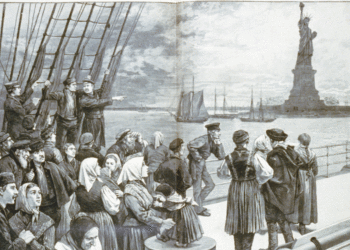
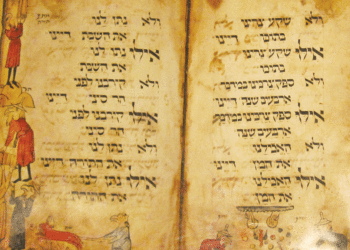
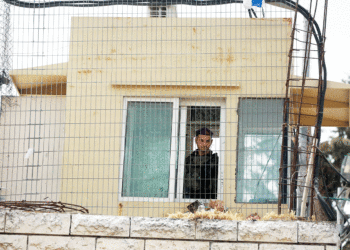
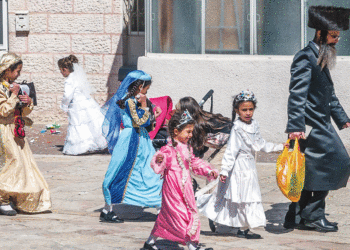
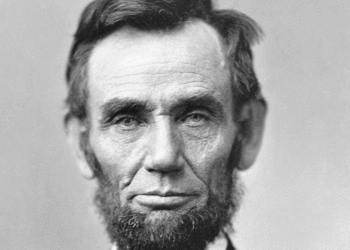
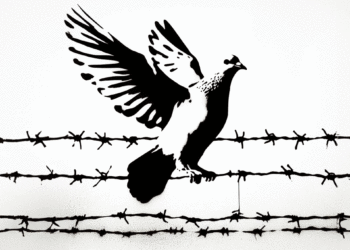





Outstanding work Arie, I appreciate your willingness to share the history of your family.
Respectfully,
JD